ANSI vs. ISO Keyboard Layout: Which One Is Better?
If you've ever carefully picked out a keyboard, you may have noticed that even keyboards of the same size have differences in key layout. In fact, there are actually two physical layout standards for keyboard layout, one is based on the physical keyboard layout of ANSI (American National Standards Institute), and the other is based on the physical keyboard layout of ISO (International Organization for Standardization). So, what is the difference between ANSI and ISO keyboard layouts? What are their strengths and weaknesses? Their differences, advantages and disadvantages will be introduced in detail below, which will also be more helpful for you to choose a keyboard layout.
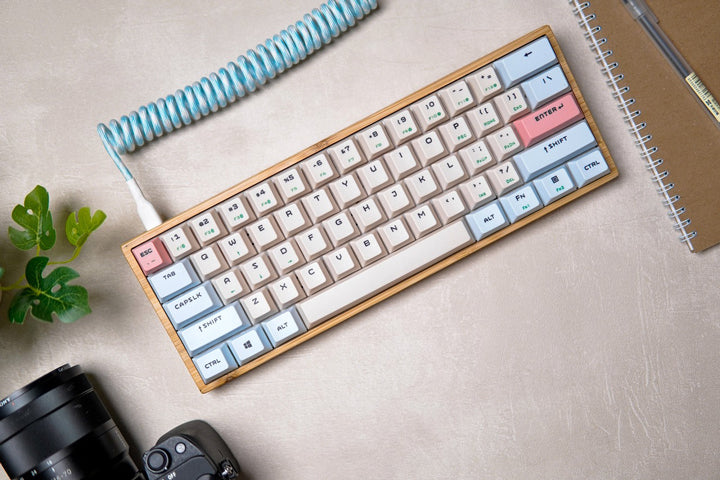
content
-
Five Differences Between ANSI and ISO Keyboards
1. Input key
2. Backslash (\) key
3. The ALT key on the right is different
4.The left shift key is different
5. Different number of buttons -
Pros of ISO Layout
1. Alt Gr key
2. Closer backslash key -
Cons of ISO layout
1. Enter key is far away
2. Shift key further to the left -
Pros of ANSI layout
1. Familiarity
2. Compact size -
Cons of ANSI layout
1. limiterd language support
2. Adjustment period - Choosing the Right Layout for You
- Customizing Your Keyboard Layout
- Frequently Asked Questions (FAQs)
- Conclusion
Five Differences Between ANSI and ISO Keyboards

There are 5 differences between ANSI and ISO layout keyboards. The 4 keys differ in location and shape, involving the Enter key, left Shift key, backslash key, and right Alt key. Another point is the number of keys. different.
1. Input key
In the ANSI layout, the Enter key is a long, narrow rectangle that occupies only one row of the keyboard, at the end of the fourth row of the keyboard.
In the ISO layout, the Enter key appears larger, taking up 2 rows of truncated bars at the end of the third and fourth rows.
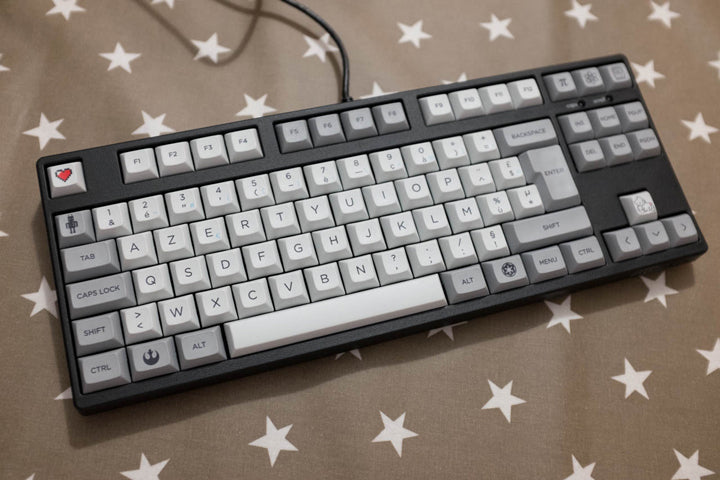
2. Backslash (\) key
In the ANSI layout, the backslash key is located directly above the Enter key and is slightly larger than the ctrl key.
In the ISO layout, the backslash key is to the left of the enter key, much smaller than the ctrl key, and the same as the alphanumeric keys.
3. The ALT key on the right is different
In ANSI layout, the Alt keys on either side of a space are the same.
In the ISO layout, the Alt key on the right is printed as Alt Gr, helping users quickly access characters with more than 2 diacritics. But now many keyboards have also been changed to Alt to achieve the same printing as left and right Alt.
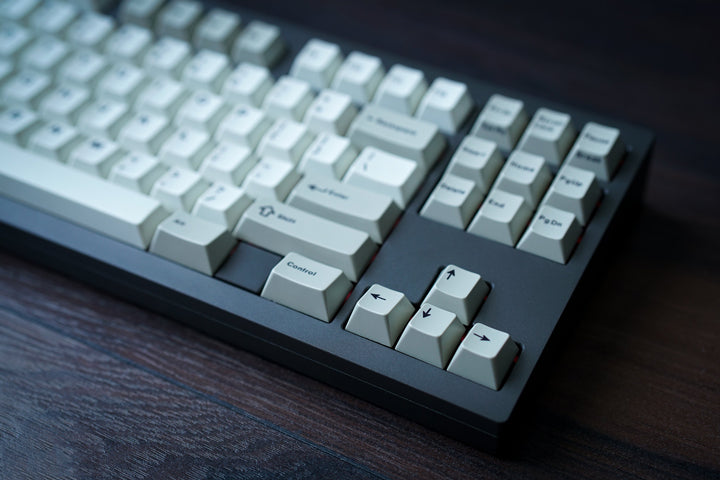
4. The left shift key is different
In ANSI layout, the left shift key is greater than the Ctrl key.
In the ISO layout, the left shift key is smaller than the Ctrl key. But most keyboards now also change it to be larger than the Ctrl key, same as ANSI layout.
5. Different number of buttons
In the ANSI layout, 80% compact keyboards have 87 keys and 100% full-size keyboards have 104 keys.
In ISO layout, 80% compact keyboard has 88 keys and 100% full size keyboard has 105 keys. But since most ISO keyboards make the shift key larger, the ISO layout has the same 87 keys as the ANSI layout in both sizes, compared to 104 keys.
Therefore, the current ANSI layout keyboard and ISO layout keyboard have changed from the initial 5 differences to 2 differences. Subtracting the differences in the right ALT key, left shift key and number of keys, only the Enter key and the backslash (\) key is different.
Pros of ISO Layout
1. Alt Gr key
The Alt Gr key helps you quickly access characters with more than 2 diacritical marks, which will save you some typing time. Therefore, ISO layout keyboards are more popular in regions such as Europe.
2. Closer backslash key
In the ISO layout, the backslash key is closer to our pinky finger and therefore easier to reach. The backslash key is used more frequently in programming, so for many programmers it will be more beneficial to them.
Cons of ISO Layout
1. Enter key is far away
In the ISO layout, although the Enter key seems to take up a lot of space, in fact, when we type, our hands are habitually placed on the fourth row. The Enter key on the fourth row becomes smaller the further away from our little finger, so when we type When pressing it with our pinky finger, we need to move further, and often users press the left backslash key because they don't move far enough. The Enter key is a button we often use. Whether we are sending a message file or wrapping a line in a document, we all need to use it. Therefore, following the above two points will cause a lot of inconvenience.
2. Shift key further to the left
In the ISO layout, the previous left shift key is divided into 2 keys, so it is also smaller, only half the size of the shift key in the ANSI layout. We will need to move our hands a greater distance to use it, and it is easy to accidentally touch the right key. Extra buttons on the side will also bring a bad user experience.
Tip: Some ISO layouts have the shift key merged with the key to its right, just like the ANSI layout, so this shortcoming will not exist.
Pros Of ANSI Layout
1. Familiarity
ANSI is the American standard layout, making it widely recognized and used.
2. Compact size
The smaller Enter key is beneficial for people with limited desktop space.
Cons of ANSI layout
1. Limited language support
ANSI keyboards may lack special characters required for non-English languages.
2. Adjustment Period
If you're used to ISO, the transition to ANSI may take some time.
Choosing the Right Layout for You
The choice between ANSI and ISO ultimately depends on your personal preferences and typing habits. If you primarily type in English and value a compact layout, ANSI may be the way to go. However, if you frequently type in European languages or prefer a full-sized Shift key, the ISO layout could be your best choice.
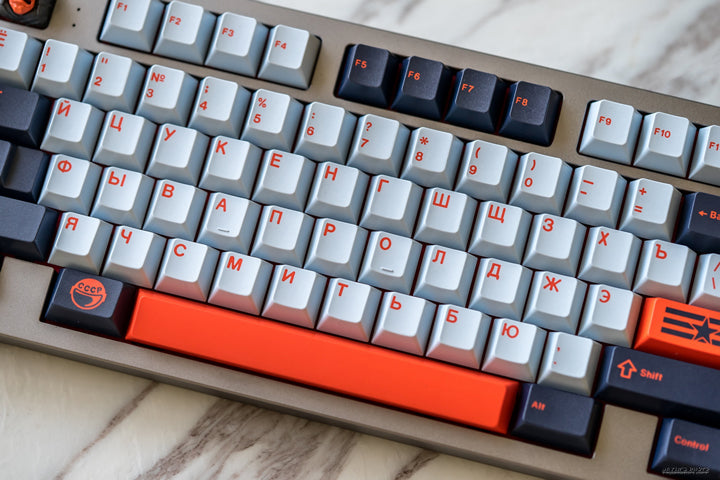
Customizing Your Keyboard Layout
Some keyboards allow you to switch between ANSI and ISO layouts, offering the flexibility to adapt to different typing needs. Check your keyboard's documentation or settings to see if this option is available.
Frequently Asked Questions (FAQs)
FAQ 1: Which layout is more common in the United States?
ANSI layout is the standard in the United States.
FAQ 2: Can I switch between ANSI and ISO layouts on my keyboard?
Some keyboards offer this feature, but not all. Check your keyboard's specifications to see if it supports layout switching.
FAQ 3: Does the layout affect typing speed?
While the layout itself may not directly impact typing speed, your personal comfort and familiarity with a particular layout can influence your typing efficiency.
FAQ 4: Are there any ergonomic considerations?
Ergonomics can play a role in your choice. Consider your hand size and typing style when choosing between layouts.
FAQ 5: Can I get a keyboard with both ANSI and ISO keys?
Some specialized keyboards offer interchangeable keycaps, allowing you to switch between ANSI and ISO keys as needed.
Conclusion
In conclusion, the choice between ANSI and ISO keyboard layouts is a matter of personal preference and typing habits. Consider your language needs, comfort, and desk space when making your decision. With the right layout, you can enhance your typing experience and productivity.
Article Directory
Five Differences Between ANSI and ISO Keyboards 1. Input key 2. Backslash (\) key 3. The ALT key on the right is different 4.The left shift key is different 5. Different number of buttons Pros of ISO Layout 1. Alt Gr key 2. Closer backslash key Cons of ISO layout 1. Enter key is far away 2. Shift key further to the left Pros of ANSI layout 1. Familiarity 2. Compact size Cons of ANSI layout 1. limiterd language support 2. Adjustment period Choosing the Right Layout for You Customizing Your Keyboard Layout Frequently Asked Questions (FAQs) Conclusion







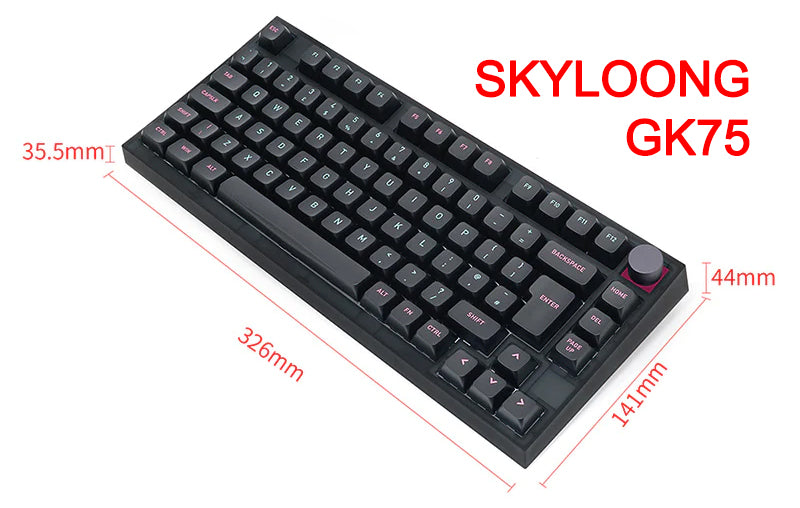
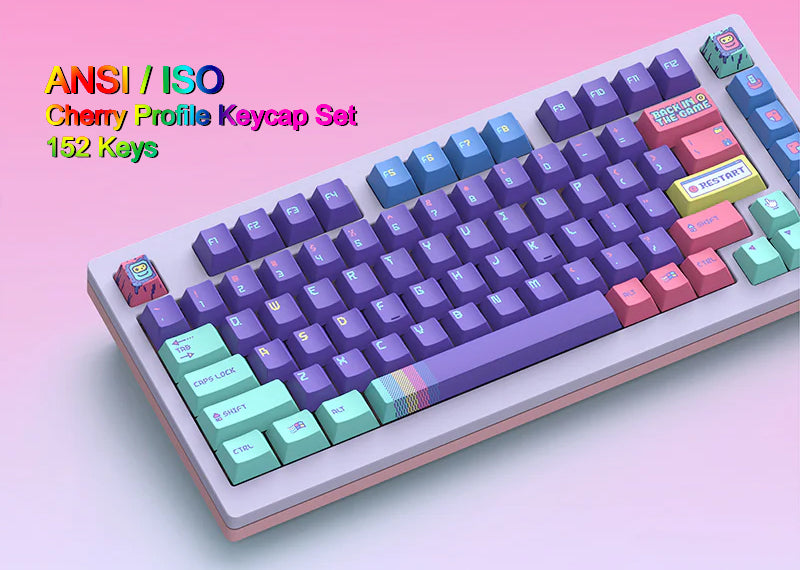


1 commentaire
G. Ermer
Oben wurde beschrieben, dass die Hände üblicherweise auf der 4. Tastaturreihe zu liegen kommen.
Wer mit zehn-Fingern schreiben gelernt hat (früher “Schreibmaschinenkurs” genannt) lernte,
dass der linke Zeigefinger immer auf der F-Taste und der rechte Zeigefinger immer auf der J-Taste zu liegen kommt. Dies ist die AUSGANGSLAGE beim Schreiben !
Im Gegensatz zur Aussage des Autors liegen damit die Hände NICHT auf der 4. Reihe sondern
korrekt auf der 3. Reihe. Somit ist auch bei der ISO-Anordnung der Tastatur es keine Schwierigkeit die Return-Taste (Eingabe-Taste) mit rechten kleinen Finger zu erreichen.
Ich selber habe (leider) auch eine ANSI-Tastatur (Fehlkauf bzw. nicht aufgepasst bei HP).
Dort ist leider weder ein ISO- noch ein korrekter ANSI-Standard verbaut worden.
So findet sich leider die ><| -Taste rechts neben der ALT-GR bzw. rechte ALT-Taste.
Dies ist seeeeehr umständlich, und läßt sich leider nur mit dem Geier-Adler-Suchsystem (2-Finger-Schreibweise) bequem bedienen.
Ich selber schreibe seit über 40 Jahren mit dem Zehn-Finger System in bin mit dem ISO- bzw.
mit umgewöhnen auch dem ANSI-Standard Tastatur-Layout ohne Probleme zurecht gekommen.
Hoffe die Standards bleiben so und die Hersteller halten sich auch an diese Standards weiterhin und machen dabei nicht ihr eigenes Süppchen …
Oben wurde beschrieben, dass die Hände üblicherweise auf der 4. Tastaturreihe zu liegen kommen.
Wer mit zehn-Fingern schreiben gelernt hat (früher “Schreibmaschinenkurs” genannt) lernte,
dass der linke Zeigefinger immer auf der F-Taste und der rechte Zeigefinger immer auf der J-Taste zu liegen kommt. Dies ist die AUSGANGSLAGE beim Schreiben !
Im Gegensatz zur Aussage des Autors liegen damit die Hände NICHT auf der 4. Reihe sondern
korrekt auf der 3. Reihe. Somit ist auch bei der ISO-Anordnung der Tastatur es keine Schwierigkeit die Return-Taste (Eingabe-Taste) mit rechten kleinen Finger zu erreichen.
Ich selber habe (leider) auch eine ANSI-Tastatur (Fehlkauf bzw. nicht aufgepasst bei HP).
Dort ist leider weder ein ISO- noch ein korrekter ANSI-Standard verbaut worden.
So findet sich leider die ><| -Taste rechts neben der ALT-GR bzw. rechte ALT-Taste.
Dies ist seeeeehr umständlich, und läßt sich leider nur mit dem Geier-Adler-Suchsystem (2-Finger-Schreibweise) bequem bedienen.
Ich selber schreibe seit über 40 Jahren mit dem Zehn-Finger System in bin mit dem ISO- bzw.
mit umgewöhnen auch dem ANSI-Standard Tastatur-Layout ohne Probleme zurecht gekommen.
Hoffe die Standards bleiben so und die Hersteller halten sich auch an diese Standards weiterhin und machen dabei nicht ihr eigenes Süppchen …